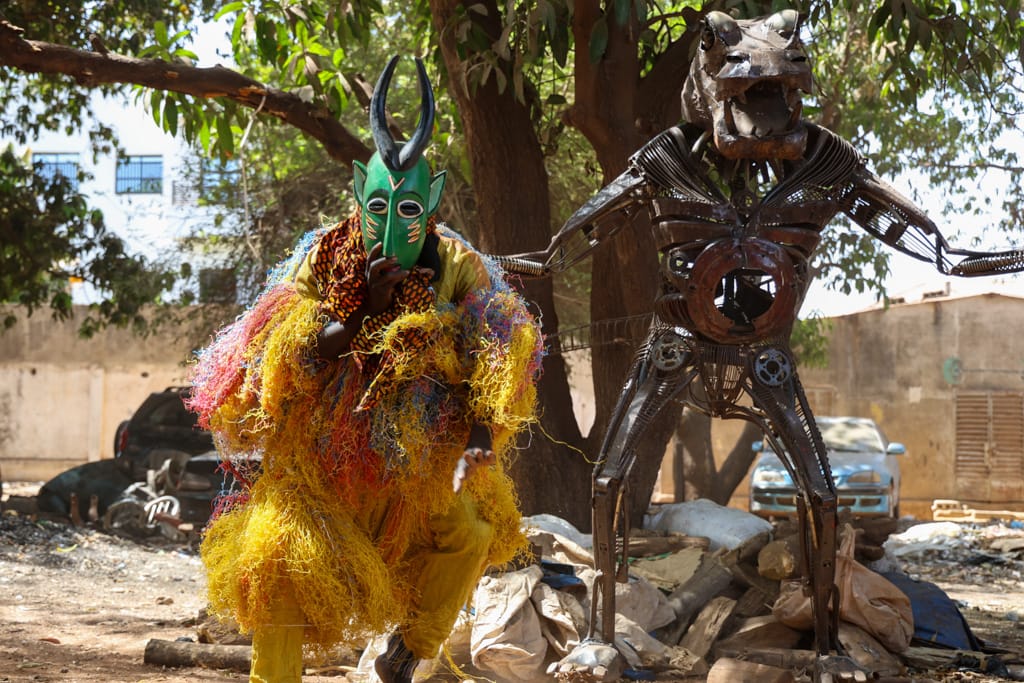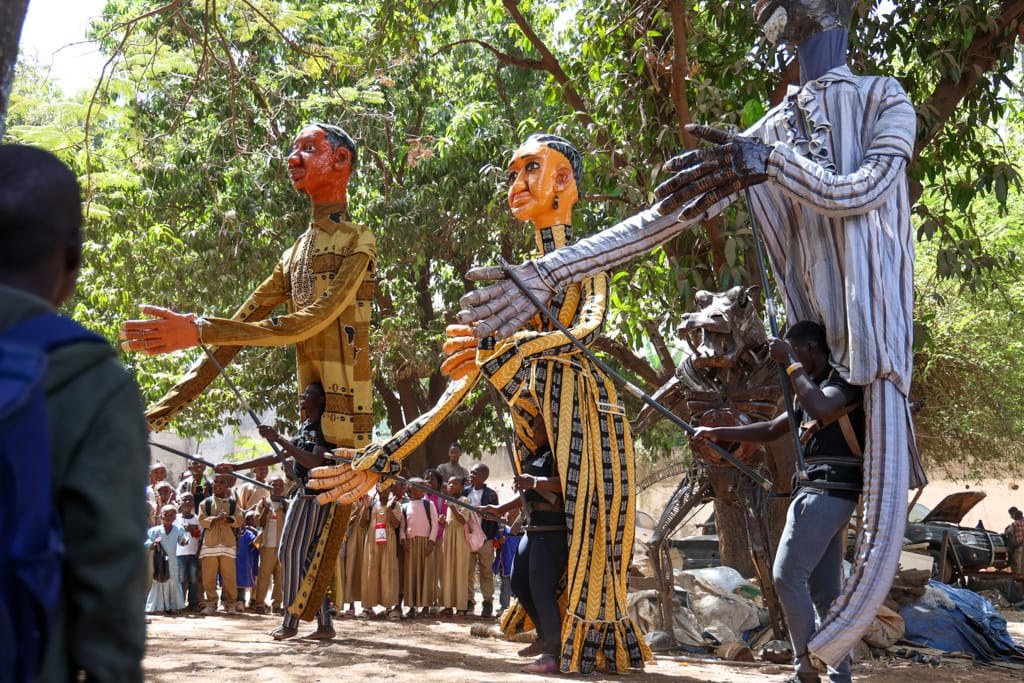West African Culture Expedition “Deep Roots 2026” (SOLD OUT)
West Africa is its people, its rhythm, its music, its traditions, its colours. West Africa is alive, and we want this ‘African Deep Roots’ to be a sensory journey of learning, showcasing the great cultural wealth that this part of the world has to offer. It will also be a great introduction to its origins, as we want to delve into the cultural roots of West Africa. Welcome to the Africa of the senses.
Our West African Culture Expedition ‘Deep Roots 2026’ will be through Casamance (Senegal), Guinea-Bissau, Sierra Leone, Liberia, Ivory Coast, and Mali .
In Africa, words have been the foundation for the transmission of epics, tales, legends, the history of ancient kingdoms, and family memories. Through rites of passage, ceremonies, fabrics, djelis (griots) of music, and puppeteers, we will travel to the cultural and social roots of this part of the continent. We will also learn about some of the most respected brotherhoods in West Africa, such as the Donso hunters and the blacksmiths. We will discover how each profession has its own rhythm.

The sound of koras, balafons and the rhythm of djembes will accompany us on our ambitious journey. And, as is customary on our expeditions, we will not forget the best urban experiences that African capitals have to offer.
African Deep Roots is also a journey through its markets, its traditional and colonial architecture, a delicious gastronomic journey through its typical dishes, a journey into everyday life in West Africa, and of course a journey through its varied landscapes, from the Atlantic beaches to the red dirt roads of Sabellian, passing through the highlands of Fouta Djalon.
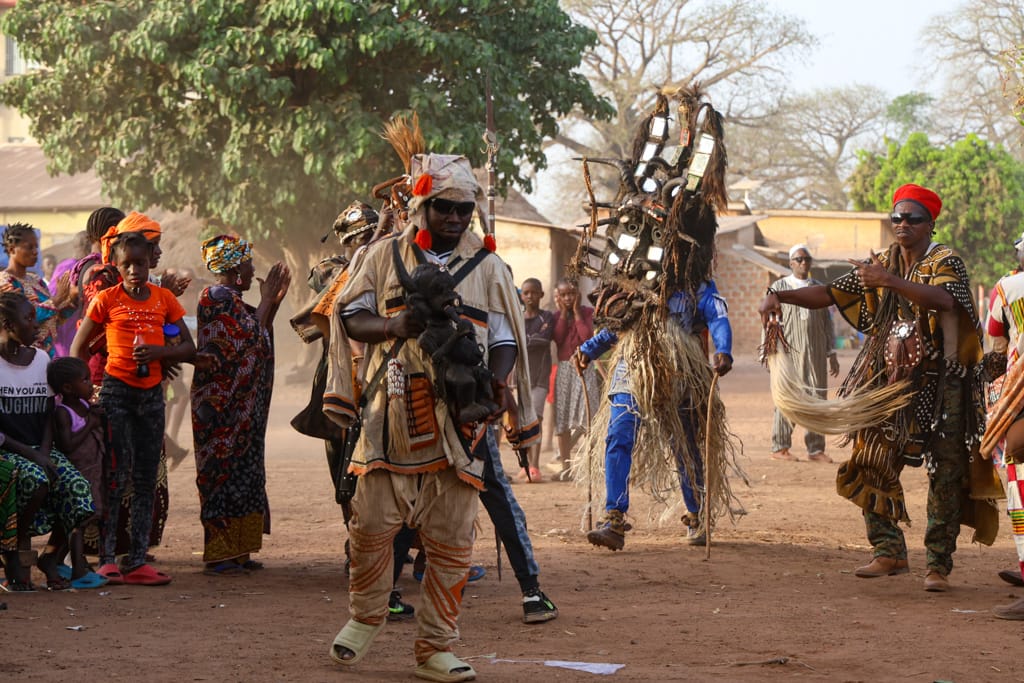
This is not a trip to ‘count countries.’
On this trip, which will begin in Gambia and end in Mali, we will visit a number of countries in just over a month. But we want to be clear: this is not a trip to ‘count countries’.
We don’t want to visit many countries in a short period of time as a ‘leitmotif’. This trip has soul and purpose in each of the countries.
This itinerary has been designed with heart and based on many years of experience travelling in West Africa. We are not interested in the number of countries we visit. We are interested in what we will see, experience and the journey we will take.
We know that each country would require many weeks of travel to explore fully, but with this route based on culture, music, and landscapes, travellers will gain a clear idea of what West Africa is all about.
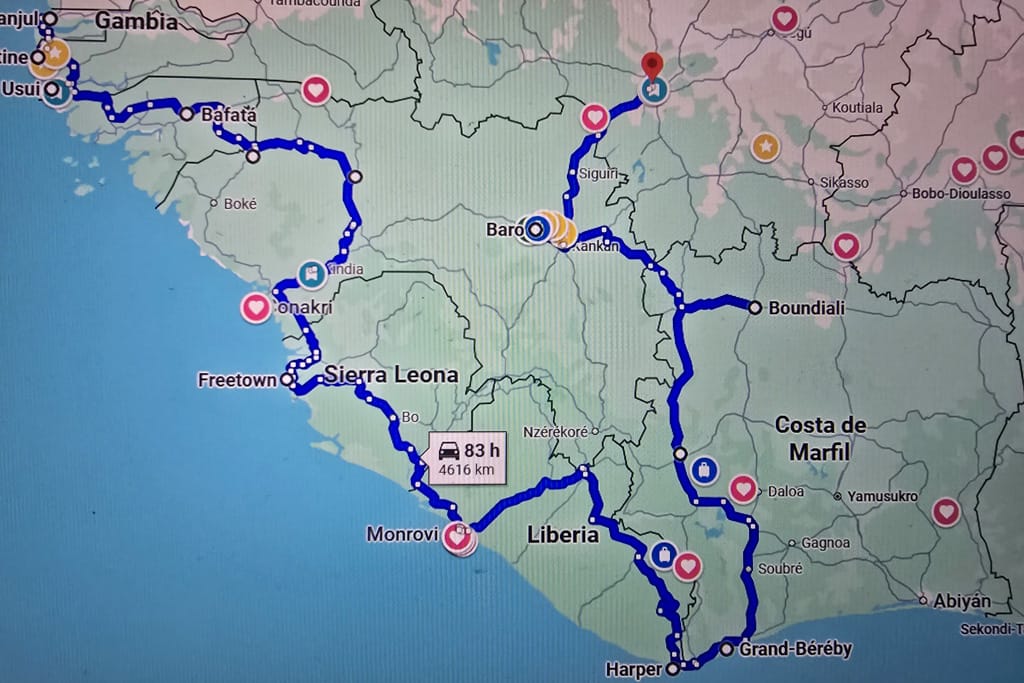
The concept of the trip: What to expect from African Deep Roots?
Those of you who know us already know that our trips focus on ‘living and experiencing’ rather than comfort. This is a special and unique trip, handcrafted by Austerio Alonso, who will be guiding the trip. Through his knowledge of the region, countless trips, friends and contacts, we will discover the culture of the regions we pass through.
On a trip like this, changes of plan or improvisation can be commonplace or even an everyday occurrence. We have a travel plan, but if something interesting comes up around us, or if there is a setback, we will not hesitate to rethink the route.
Therefore, we offer a rough itinerary, never a day-by-day schedule. We will choose our means of transport as we go along, and they will be of all kinds, from vans to motorcycles.
In West Africa, public transport is everywhere, so it won’t be a problem to find vans, cars or motorbikes to travel the route. These vehicles are intended for transporting local passengers, but we will be renting them for our own use. So don’t expect air conditioning and brand new seats.
Meals will often be eaten on the road, at local stalls and restaurants. In Senegal, Guinea Bissau, Guinea Conakry and Ivory Coast, the food is delicious. In Sierra Leone and Liberia, not so much. This is part of the journey.
Accommodation will generally be basic and we will book it as we go along. We will also be camping in villages on many occasions. Please bear in mind that we will be travelling through rural areas of Africa where there are not many amenities.
If you are still interested in taking this trip…here is everything you will discover:
Summary of highlights of the trip to West Africa
Culture (festivals, music, ceremonies, dance, performance):
- Music in Upper Casamance: concerts, parties and jam sessions (kora, percussion, dance, reggae nights).
- High Casamance Diola culture: Diola masks (Kumpo).
- Diola culture: Kalin or Bukut, a major circumcision ceremony.
- Traditional and colonial architecture (Casamance, Guinea Bissau, Liberia, Sierra Leone, etc.).
- Malinke culture, mainly in Guinea Conakry and Guinea Bissau. Ceremonies, artisans, Donso hunters, traditional music, dance, percussion, etc.
- Dundumba in Guinea Conakry: incredible male dance.
- Mende culture in Sierra Leone: masks and dance.
- Dan culture in Ivory Coast: different mask ceremonies in western Ivory Coast.
- Senufo culture: balafon and fire dance.
- Bambara culture of Mali puppets and street performance.
Places (villages, beaches, regions, cities of interest)
- Kafountine, an impressive fishing port bustling with activity.
- Freetown, Bafata, Bissau, and Harper have good examples of colonial architecture. We especially like Bafata and Freetown.
- The Fouta Djalon highlands and their waterfalls.
- The Tiwai Island Reserve in Sierra Leone.
Small exploration parts
As with every special trip, we have included some new sections in this one. West Africa is a region we know very well. We have travelled extensively throughout the region over many years and are familiar with almost all of it. Even so, we want to explore the southern part of Liberia, which will be new to us from Ganta Harper onwards. We will also take a shortcut from Odianne in Ivory Coast to Kankan in Guinea. Everything else is well known to us.
Highlights and description of the West African Culture Expedition
Here is a summary, country by country, of what we will see and experience during the African Deep Roots trip.
Trip to Casamance (Senegal)
We begin our journey in Gambia, a country that will serve only as a gateway to African Deep Roots, and continue on to Casamance, in southern Senegal.
In Casamance, a region in southern Senegal, we find different ethnic groups living together in harmony and mutual respect.
The largest ethnic group in this region is the Diola. Their traditional culture, masks and initiation ceremonies will be the focus of our tour of Casamance.


Casamance is renowned for its musical atmosphere. It is a perfect introduction to the trip, and we will enjoy Senegalese hospitality and its wonderful culture for several days, almost a week.
The nights in Kafountine and Abene are incredibly lively. Thanks to our friends who live there, we will be kept informed of all the events taking place, including kora concerts, percussion and dance nights, weddings where the Kumpo and other masks appear. You haven’t been to Casamance if you haven’t experienced the famous reggae nights.
In addition to the musical atmosphere, we will stroll through the hypnotic port of Kafountine, one of the liveliest and busiest in West Africa.
We can say that Casamance is one of our favourite places in Africa. We invite you to read our colleague Mara’s post about Diola culture. Culture and Dance of the Diola People of Casamance.
We also guarantee that it will be one of the highlights of your trip.
Diola ceremony of male circumcision Kalin or Bukut that occurs every 30 years
The Kalin or Bukut is a male initiation rite of the Diola people and takes place every 30 years in each village. With a rotation system, each year the Kalin is held in a different village. These villages go into considerable debt as there are constant invitations and celebrations throughout the week. In 2026, we will attend a large Kalin lasting several days.
The Kalin or Bukut dance and ceremony of Casamance
KALIN! A dance and a unique and important event in the life of the Diola people. An ancient tradition. A popular initiation ceremony only for males, including boys from the age of two or three up to uninitiated adults.
The Bukut takes place every 30 years and involves young men entering the sacred forest for a month, where elders and adults who have already been initiated pass on their courage, values and the secrets of life in the Diola culture.
As soon as it is known that the Bukut will take place, all uninitiated men are required to return to their village of origin, even if, for example, they live abroad.
No excuses! If you do not participate in the Bukut, the family will be forced to pay a very high price, such as sacrificing animals like cows, which are very expensive in Casamance. (I am sure that few people have renounced this initiation, something so fundamental to their culture and to their pure connection, the pride of living as a Diola man).
Guinea-Bissau, calm and decline
In Guinea-Bissau, we will stop in the capital and in Bafata. In both cities, we will be able to enjoy their old colonial buildings and, above all, the relaxed atmosphere of their inhabitants. We particularly like Bafata, Guinea-Bissau’s second largest city, known for being the birthplace of Amílcar Cabral. We are in Malinke territory, so we will try to explore its culture.
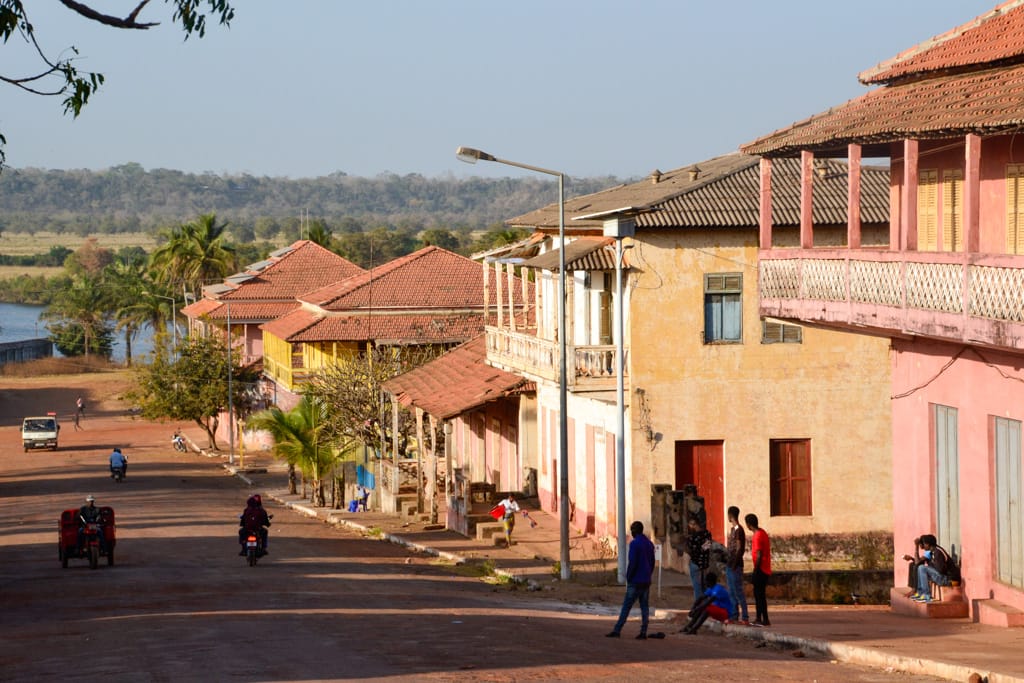
Guinea Conakry, Fulani culture in the mountains and Malinke country
Fouta Djalon, the mountains of West Africa
Our tour of Guinea Conakry is divided into two parts. First, we will travel through the highlands of Fouta Djalon, the birthplace of West Africa’s major rivers.
Fouta Djalon, with its pleasant climate, excellent cuisine and garden produce, majestic landscapes, countless waterfalls, impressive canyons and beautiful natural pools where you can cool off, is an excellent place for hiking.
In Ainguel, a beautiful Fulani mountain village, we will spend two nights and enjoy its waterfalls and landscapes, as well as going on a few short hikes. More about Fouta Djalon.
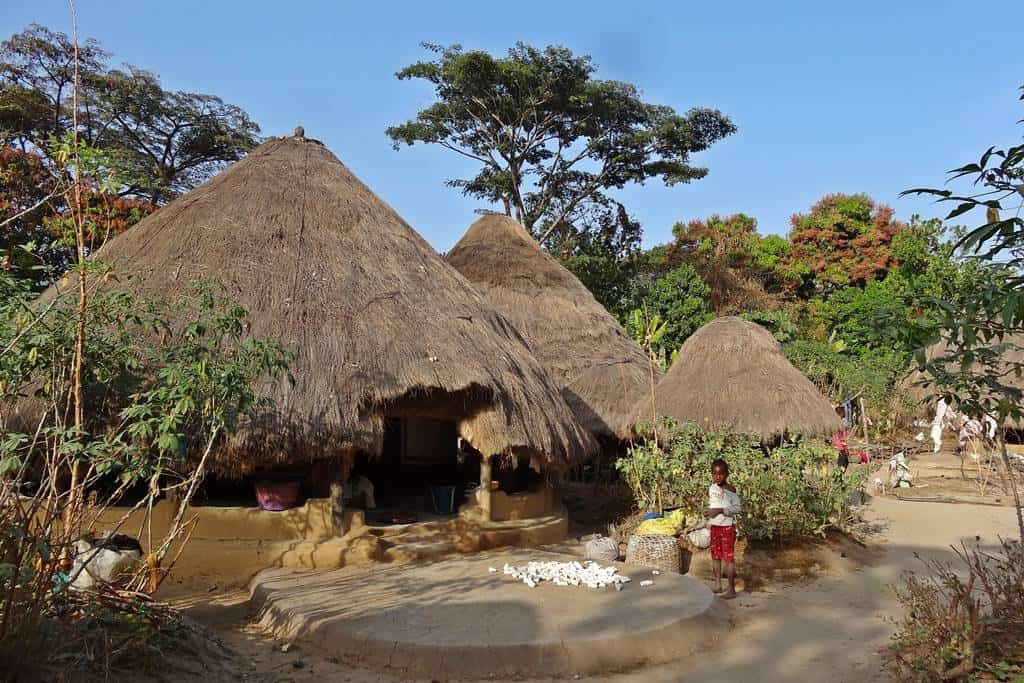
Malinke culture of Guinea Conakry
The second part of our journey through Guinea Conakry takes us to Malinke Country, which we believe is the most culturally attractive part of the entire country.
We are in the land of the best percussionists, the most powerful dances, the land of marabouts and Donso hunters. Today, almost all Malinkes in Africa are Muslims, although a mixture of Islam and traditional rituals is still quite common in rural areas. During the trip, we will see this syncretism on numerous occasions, and we will be able to see the spectacular masks used in initiation rituals.
Rituals, divination (geomancy), protective masks, dance, music, and the Dundunba ceremony with Baratis. Two days of grand celebrations. We will see one of the most impressive and powerful masks in the entire Malinké country.
Over the course of several days, we will explore this region, which is undoubtedly one of the most interesting in West Africa.
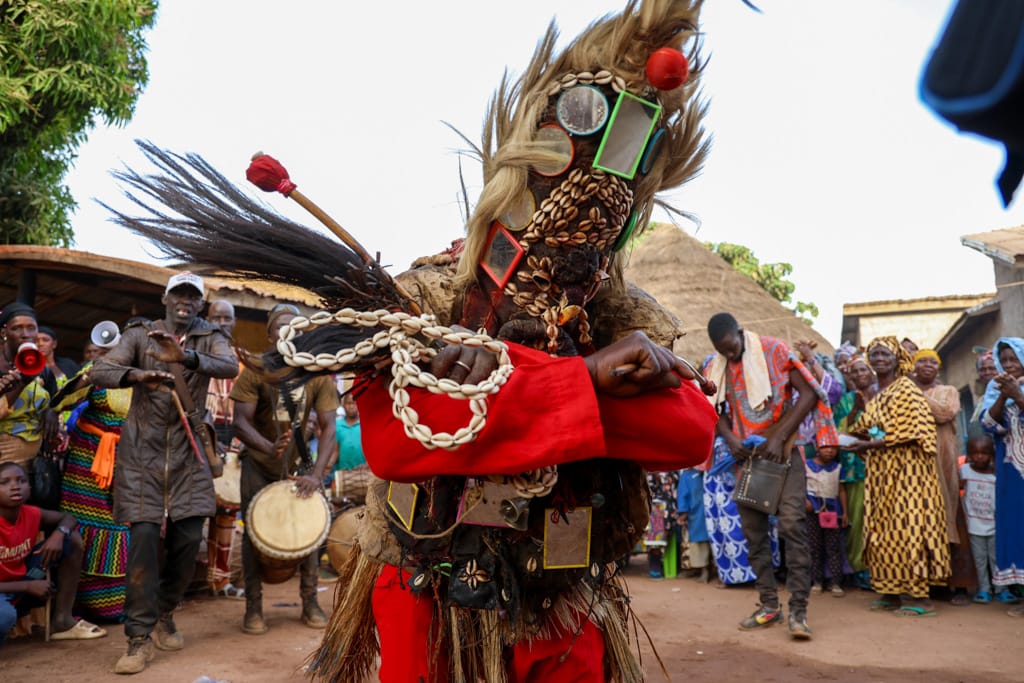
The Malinké or Mandinka tribes, originally descended from the Mali Empire, have spread throughout most of West Africa since the days of the Empire’s first ruler, Sundjata Keita, and today belong to the largest ethnolinguistic group in West Africa, the Mande.
But most Mandinka still live in a society with a tradition of oral history dating back hundreds of years, passed down from generation to generation through songs, proverbs, and stories from members of griot families with famous surnames such as Konte, Suso, Jobarteh, and Kouyate (the first griot). For centuries, these were the traditional historians, genealogists, singers of praise, war agitators, whistleblowers, advisors, arbitrators, jesters, gossips, satirists, reporters, and political commentators.

The musical instruments most commonly used to accompany these singing or storytelling troubadours were the balafon, a type of xylophone; the kora, a stringed instrument with a sound similar to that of a harp; and the bolonbata.
The kora has become the hallmark of traditional Mandinka musicians over the years, and although the instrument has lost most of its original importance with the passage of time and the advent of radio, television, cinema and the telephone, it is still frequently used to entertain people or add sparkle to a formal ceremony or political campaign.
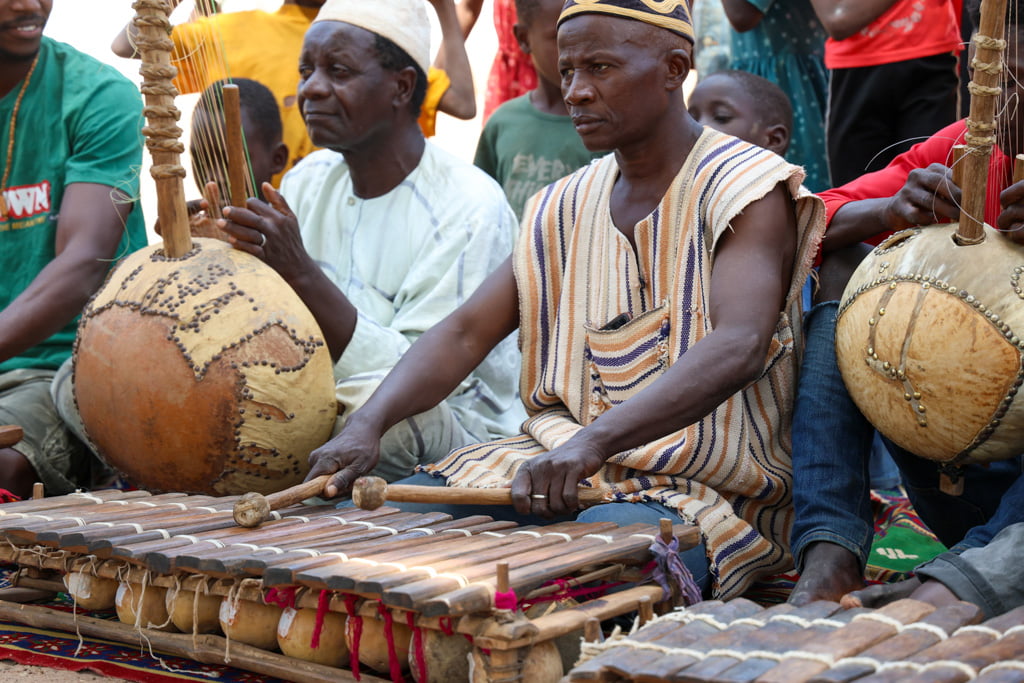
Guinea Conakry, at the heart of African percussion
We delve into the heart of African percussion and rhythms to witness a ‘dundunba’ dance, the dance of strong men. Musicians and dancers from all over the world travel to this region to spend long periods of time participating in dance and percussion workshops.
The Dundunba, the dance of strong men, is the name of a traditional Mandingue dance and rhythm that is highly appreciated in the Upper Guinea region. It consists of a set of 28 different rhythms and represents a symbolic struggle between different ‘baratis’.
The ‘Baratis’ are not only important people in charge of all the rituals and festive events in the village, but also great dancers who are usually recognised at the age of 6.
The dundumba is an intensely physical and strenuous dance, marked by percussion concerts played under clouds of dust throughout the ceremony. We will have the opportunity to witness this ceremonial dance, along with a Malinke mask ceremony.
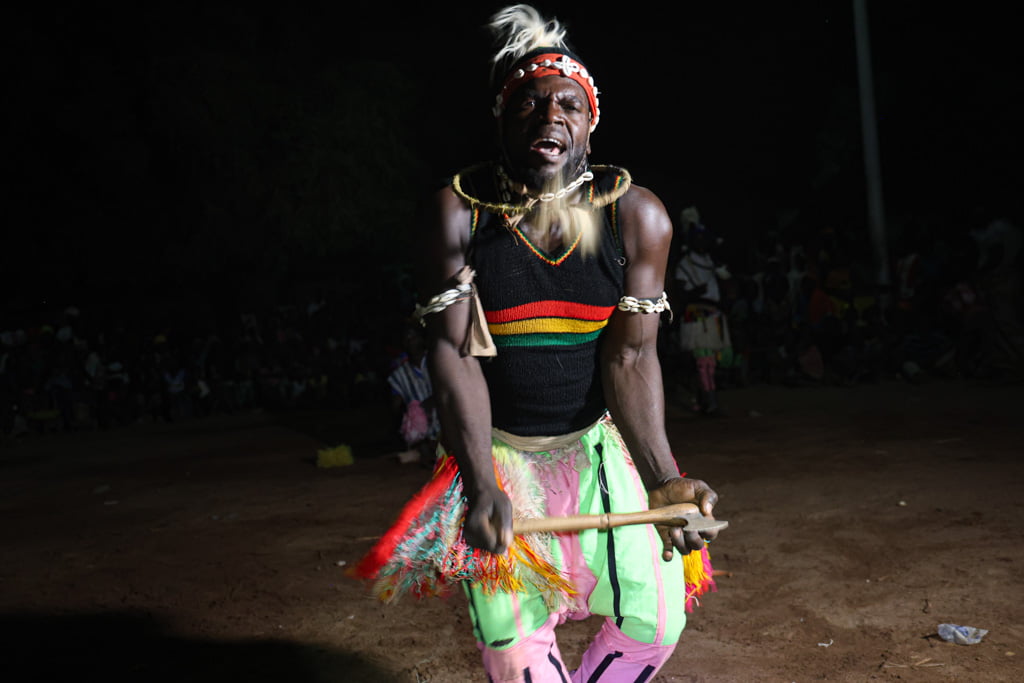
The Donso hunters’ guild in Guinea and Mali
The Dozo, or ‘master hunters’, form a secret society that guards the secrets of the forest. They are respected for their deep knowledge of nature and geography, as well as for their spiritual powers. Rituals, protection of the territory, values, and hunting. On this journey, we will enter their world of initiation.
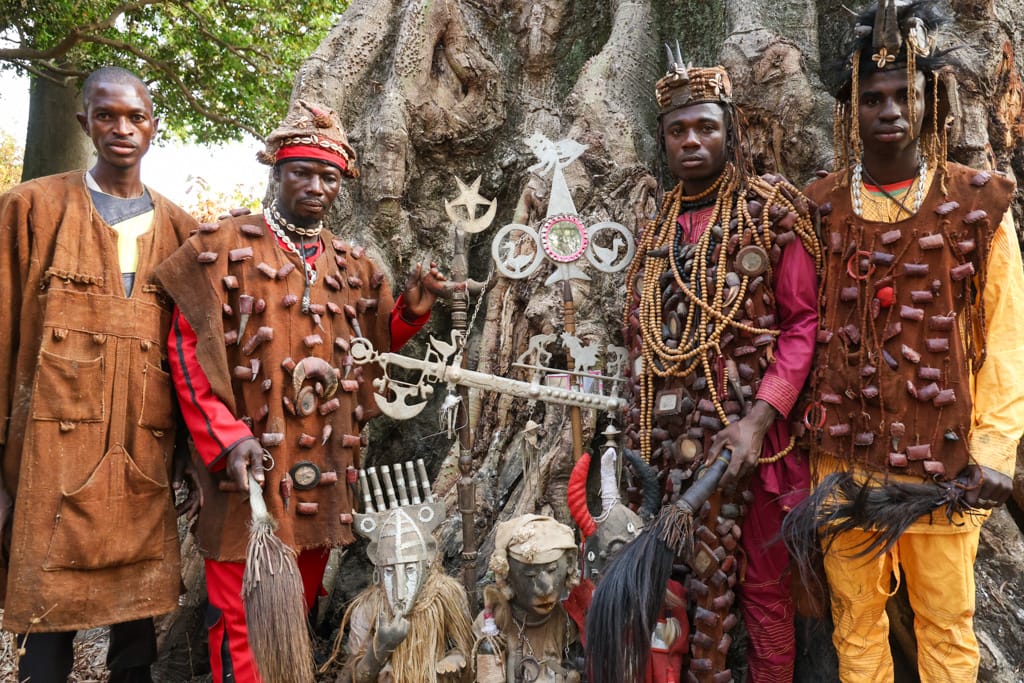
Sierra Leone, the country of smiles
Perhaps Sierra Leone’s greatest attraction is its beaches, but we haven’t come on this trip to sunbathe. We will focus on Freetown and Tiwai Island, and enjoy the warmth of their inhabitants.
Freetown, Krio-style buildings
Freetown is the incredible capital of Sierra Leone. Imagine a peninsula with lush mountains sloping down to a turquoise blue sea. In one corner of this peninsula lies Freetown, nestled between the mountain slopes and the sea. It is a city full of life, hustle and bustle, old Krio-style wooden buildings reminiscent of old American architecture.
Traffic chaos, all kinds of street stalls, clothes, food, etc. Freetown is bustling: people, cars, motorcycles in all directions through the narrow streets.
The inhabitants of Freetown (especially the younger ones) sport a street style, tattoos, New York rapper-style gestures and urban clothing. Chat with many of them for a while and they’ll end up asking to have their photo taken with you. At night, there are many bars where you can go out for a drink and enjoy loud music until you drop.

Tiwai Island and Mende culture
Tiwai Island (Isla Grande in Mende) is an inland island located on the Moa River, covering an area of approximately 12 km², located within the Upper Guinea Tropical Rainforest in south-eastern Sierra Leone, about 80 km from the border with Liberia.
This beautiful island is covered in lush tropical rainforest and is home to a wide variety of primates. We will visit it.
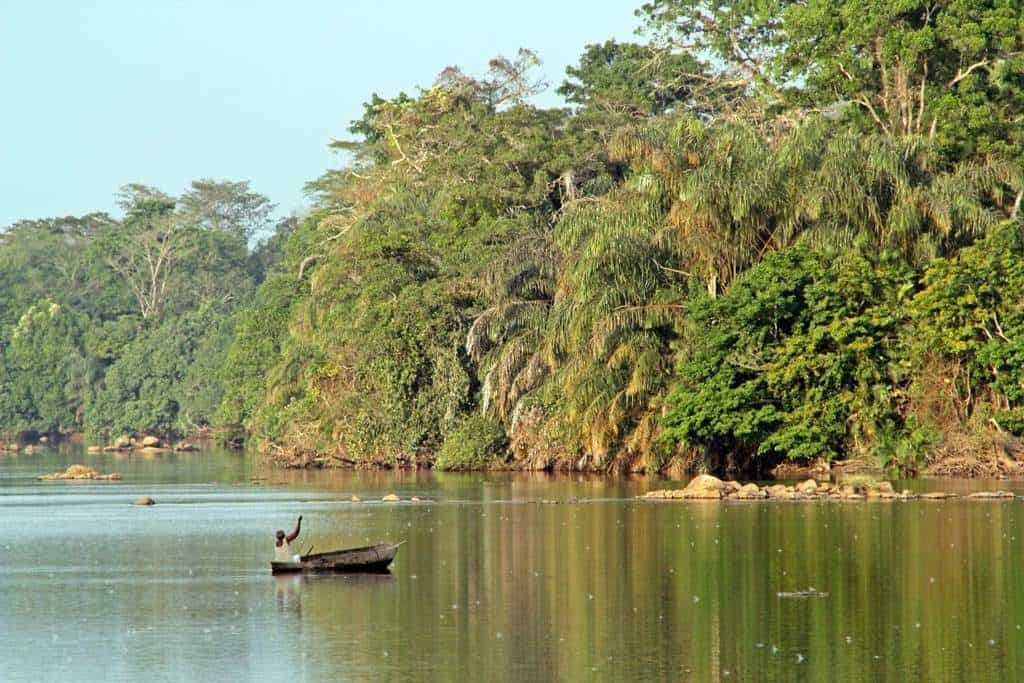
Mende ceremonie
Next to Tiwai Island is a beautiful traditional Mende village. Although they are Islamised, as are the Malinke and other ethnic groups, most of them combine Islam with traditional practices. We will attend a Mende ceremony.
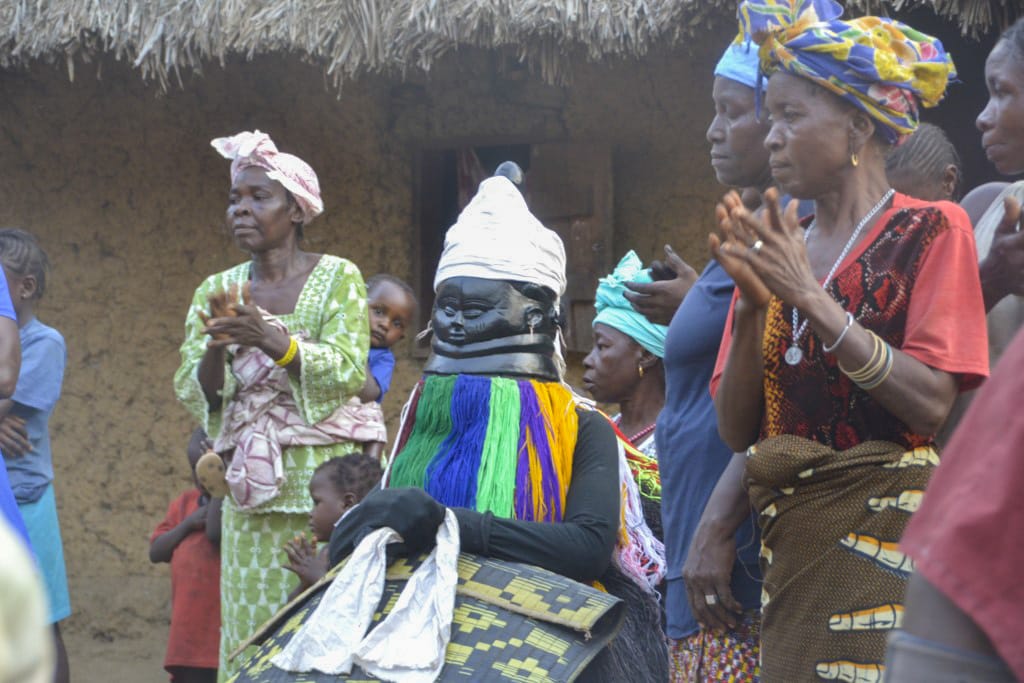
Liberia, a country with a different character
Liberia is a raw country. It is not easy or common for Liberia to seduce travellers. Unlike its neighbour Sierra Leone, the inhabitants here are more reserved. And it is not common for them to offer to show off their culture.
We have been to Liberia many times and, to be honest, we always come away with mixed feelings. This time we are going to try a different route that will take us to Harper. We are going to travel through a region that we know preserves its traditions and we will try to explore them. Of course, we are going to learn about the fascinating history of Liberia and enjoy its colonial architecture, especially in Harper.
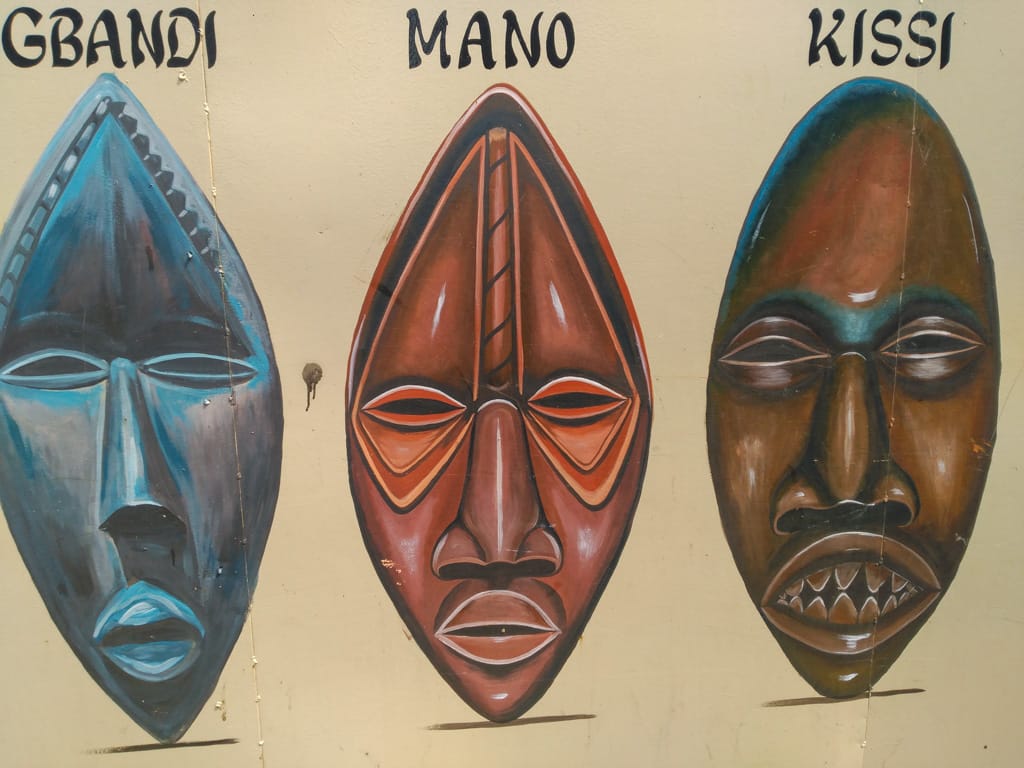
Ivory Coast, from south to north
Ivory Coast has a great cultural reputation and is known for its immense variety and quantity of ritual masks and ethnic groups that preserve tradition. In our itinerary, we focus on the west of the country. We will explore the Dan and Senufo cultures of Ivory Coast.
Dan Village
In northwestern Ivory Coast, we find the Dan or Yacouba people, where we will travel to two villages in the region to attend two different ceremonies. One is the acrobatic dance of the snake girls, and the other is the stilts ceremony north of Man.
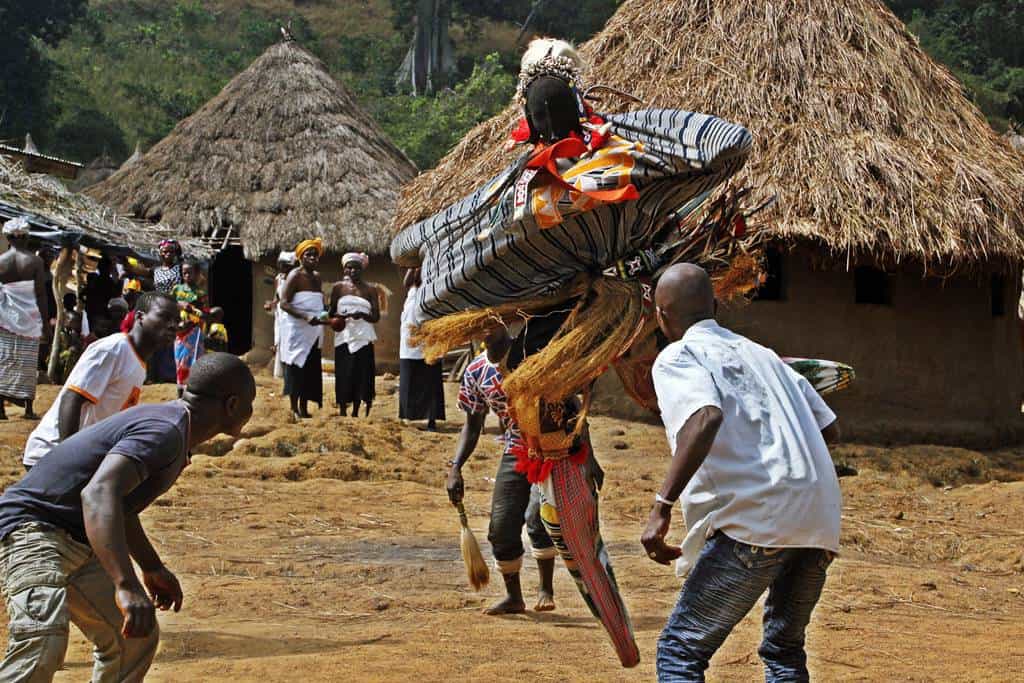
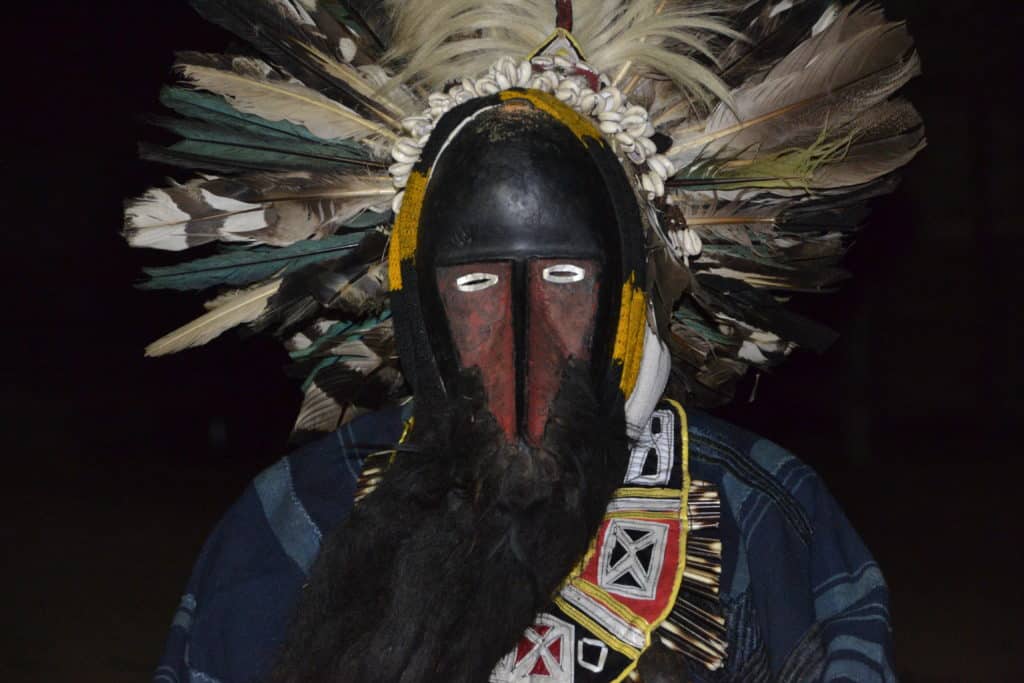
Senufo people
We will travel to northern Ivory Coast to meet the Senufo people and learn about their ancestral traditions. We will have the opportunity to attend the Ngoro dance, which is performed during women’s initiation ceremonies. During the dance, bare-chested women dance around the fire, while the men dance on top of it. Balafons and flutes set the rhythm of the dance.
Next, Mali
*As everyone knows, the situation in Mali is unpredictable. In 2024, we cancelled our trip because many Malian embassies stopped issuing tourist visas. Among them was the embassy in Spain. If the security situation were to worsen, or if the Malian embassy in Spain were to cancel visas again, this African Deep Roots trip would end in Conakry or Abidjan. If any passenger were unable to obtain a Malian visa, they would be helped to reach the capital of Guinea or Ivory Coast.
Grand finale in Bamako
In Bamako, we will visit its interesting market, where you can find different artisans working with wood, bronze, leather, etc. We will also learn about the world of Bambara puppets. We will do this through Yaya Coulubaly, puppeteer and living legend of the oral transmission of Bambara culture.
Elsewhere in Bamako, we will attend a street performance that blends tradition, social commitment and urban art. We will spend the evening with them.
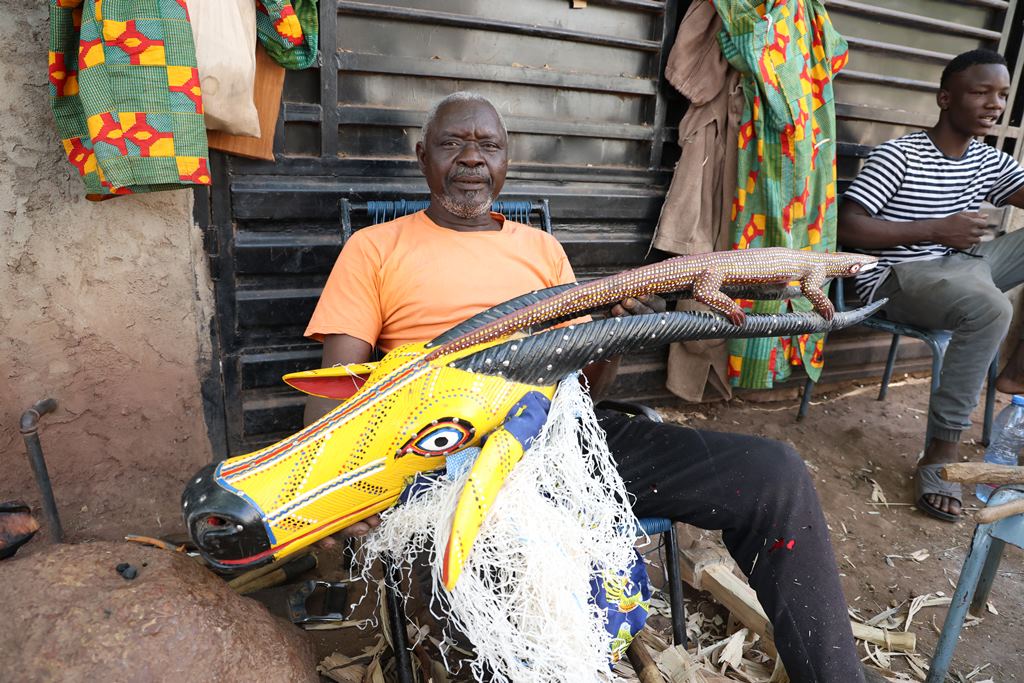
The company Sogolon
Yaya Coulibaly’s Sogolon puppet company was founded in 1980. It was the first to focus on this ancient African art form. Over time, a group of independent artistic groups has been created with the aim of contributing to the creation and promotion of puppet theatre.
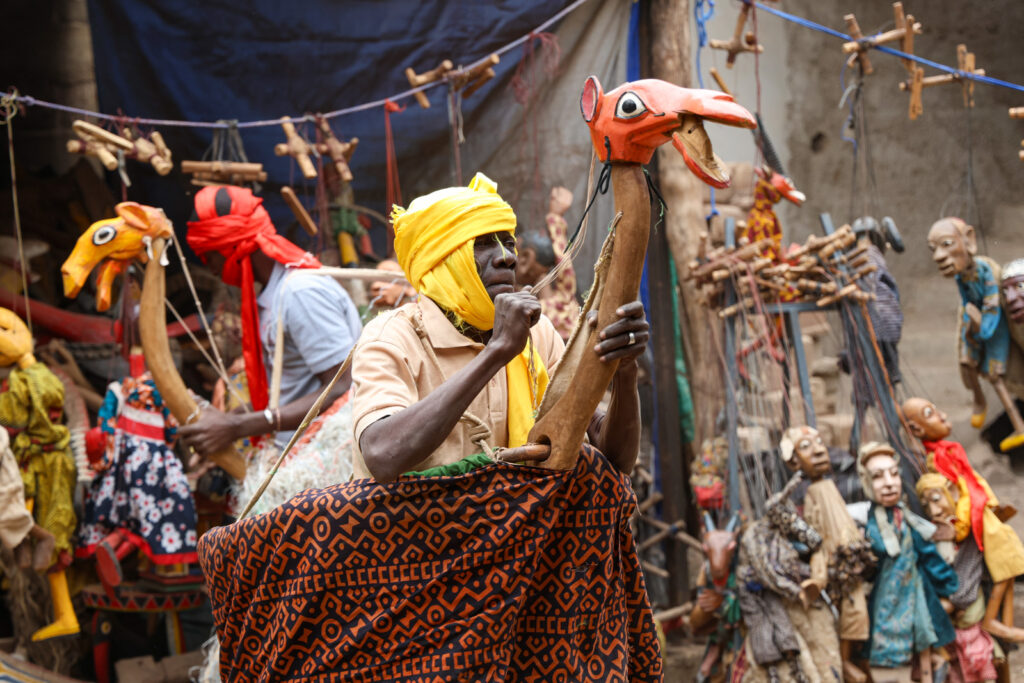
Yaya Coulibaly is one of the greatest living puppeteers, heir to this ancient tradition. A major art form that has led him to promote a new, dynamic and contemporary puppet theatre that has allowed him to tour internationally.
An actor, playwright, writer, and director, he has spent four decades exploring all facets of the art of puppetry. In Bamako, he has a ‘sanctuary house’ where he keeps 25,000 pieces, some of which date back to the 7th century.
We will spend the morning in Bamako with them.
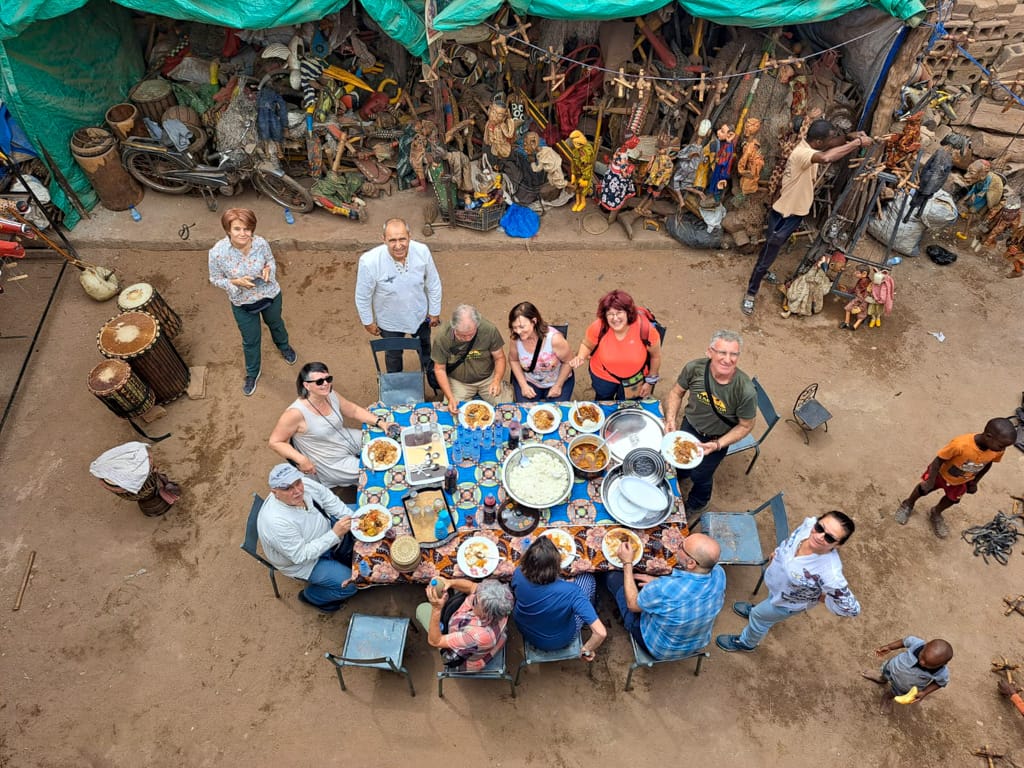
The company Nama
We will end the trip in the afternoon with the Nama company. The Nama company (named after the Nama mask, a tribute to the Bamana and Malinche traditions) seeks to promote the traditional culture of Malian puppets beyond geographical, cultural and social boundaries through its creations, offering a new perspective on the history of a people shaped by the dance steps of puppets.
